Primitive Skils: A Lesson in Reconnection
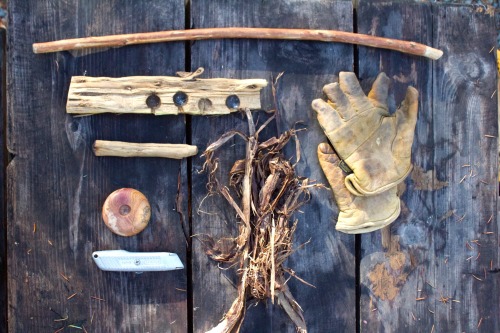
I remember my first introduction to the world of primitive skills – the day my employer and mentor first showed me how to make fire by friction.
Fifteen of us sat and watched as David sat quietly on the ground and pulled several pieces of wood from a canvas bag. A long bow, a slender rectangle, a cylindrical branch, a stone, and a bag of bark. Without speaking, he positioned the branch, wrapped in the string of the bow, perpendicularly to the slender rectangle. He steadied it with a rock on the top of the branch, then began to rhythmically move his arm back and forth, rotating the branch in a divot in the board. We waited, barely willing to breathe lest we break the spell David wove.
Almost immediately, fragrant sage smoke began to pour from beneath David’s hands. Without breaking his focus, he set down his bow, and lifted the wooden rectangle from the ground to reveal a small, glowing ember. He gently tapped the ember into a clump of bark, then held it to his face and began to gently blow. He seemed to breathe life into his hands. Thick, yellow smoke began to surround his head until, in a split second, flames erupted. To me, he seemed a modern day Prometheus – the bringer of fire.
I feel like Prometheus on every camping trip
From that moment, I was spellbound by both fire and the world of traditional skills. Tapping into this body of knowledge felt like a way to connect with the most ancient, ancestral part of myself. As a person already comfortable in the outdoors, I felt catapulted into a new stratosphere of connection to the earth. I could create fire. Ever since man discovered fire, it has played a central roles in so many aspects of our lives. We cook over fire, gather around it as a focal point of community, tell stories around it, and use it to survive long, cold winters. To be able to create it with my own hands, without the aid of lighters or fuel, felt like a revelation.
This skill, and the community to which it introduced me, changed my life.
My trusty fireboard, cut from a sage trunk in the Utah desert
For the next two years, I taught friction fire to my wilderness therapy students while simultaneously seeking out primitive skills teachers. I learned wicker basketry and how to make spirit horses. I attended WinterCount, my first primitive skills gathering, which could fill an entire blog post by itself. While at WinterCount, I sewed with buckskin for the first time, wet-felted with llama wool, crafted a didjeridoo, soaked and manipulated porcupine quills into a bracelet, learned many new ways of making fire, and learned about the bevy of wild edibles growing in the southern Arizona desert. All in the warm embrace of primitive skills enthusiasts who range from ranchers and traditional homesteaders to barefoot, tattooed 20-somethings.
I recently had the good fortune to discover the Marblemount Homestead. Steve and Corina Sahlin live just down the road from the Environmental Learning Center on a beautiful piece of land set back from Highway 20. Corina dyes and spins her own yarn and Steve imparts his impressive body of knowledge to community members through a variety of traditional skills classes including hide-tanning, friction fire, and bow-making. Two of my graduate cohort members and I jumped at the chance to make our own bows and arrived on a chilly but sunny Saturday morning at their homestead, ready to learn.
In just a day, Steve took us through the process of turning a red oak plank into a beautiful working bow. We took the planks, tapered at each end by Steve, and set to work shaping them. We closely followed Steve’s instructions to scrape wood equally from both sides, to only cut from the “belly” of the bow, and to move slowly and deliberately. We diligently scraped, then perched our bows on Steve’s tillering tree to figure out things like draw length and draw weight.
Shaping my bow with a rasp
Steve helping Kelly Sleight, another graduate student, perfect her draw weight
Liz at the tillering tree
Liz, Kelly and I agree: to learn such knowledge feels empowering. To work with our hands and to create a beautiful, functional product is something so easily lost in today’s world of omnipresent technology and living life virtually. Steve and Corina’s homestead feels like a lovely haven, safe from pervasive iPhones and computers, and a place of great knowledge and learning.
Confirmed: it shoots.
The world of primitive skills has brought such joy into my life. I came into graduate school knowing that this body of knowledge and educational goals would be an integral part of my studies, and that I would work to find ways to incorporate it into my residency at the North Cascades Institute. Along with my bow-making workshop, our entire graduate cohort got the chance to learn deer processing from Katie Russell in the Methow Valley, and I continue to push friction fire on whomever shows the slightest interest in it. Whether it’s my fellow grad students or the inspiring young adults at the Youth Leadership Conference, I see the same reaction upon exposure to these skills: awe, wonder, and a deep sense of satisfaction and accomplishment. I am grateful for all my teachers, and for those who’ve allowed me to teach them.
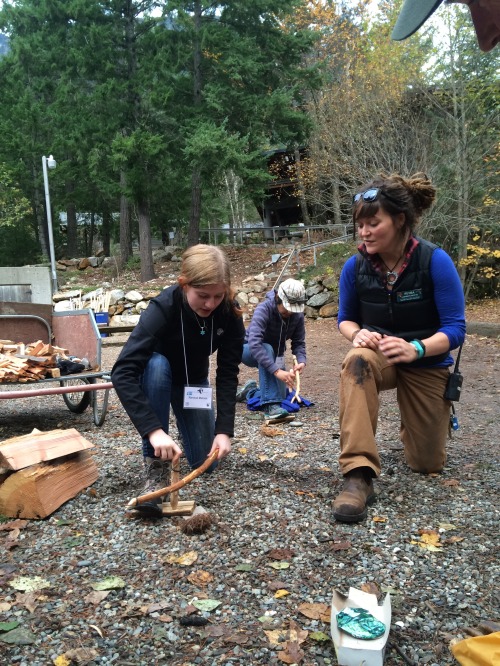


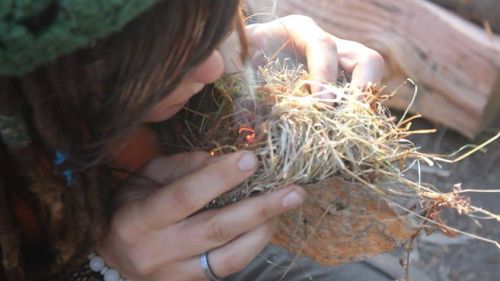
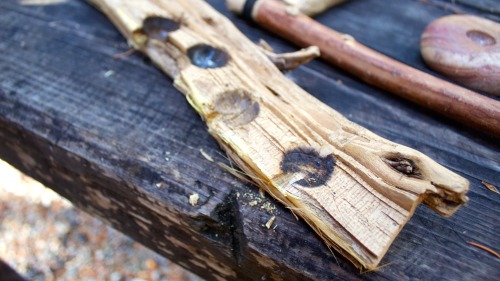
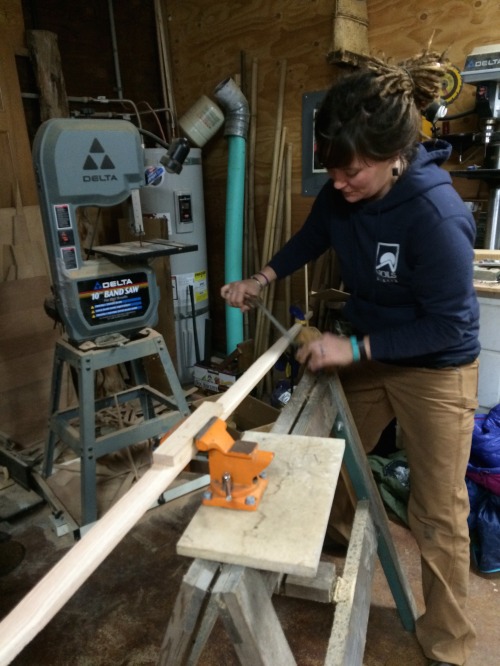
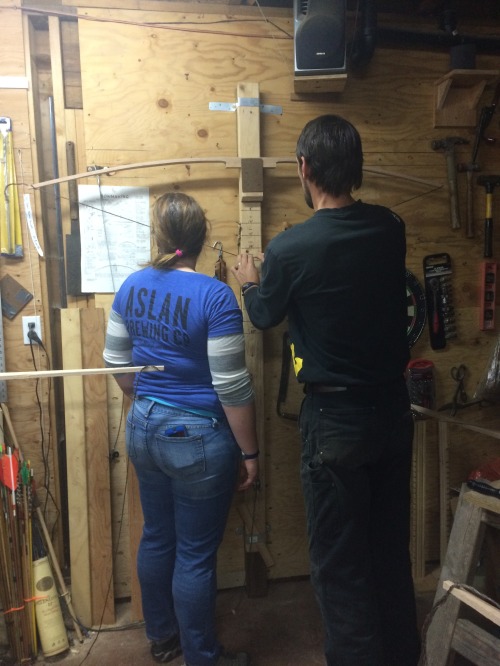
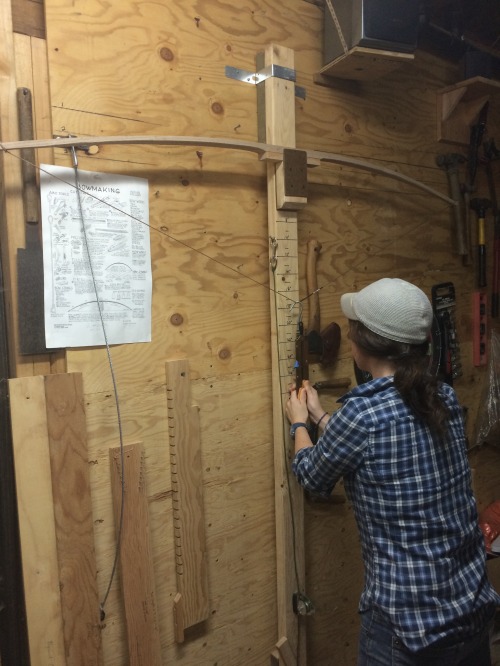
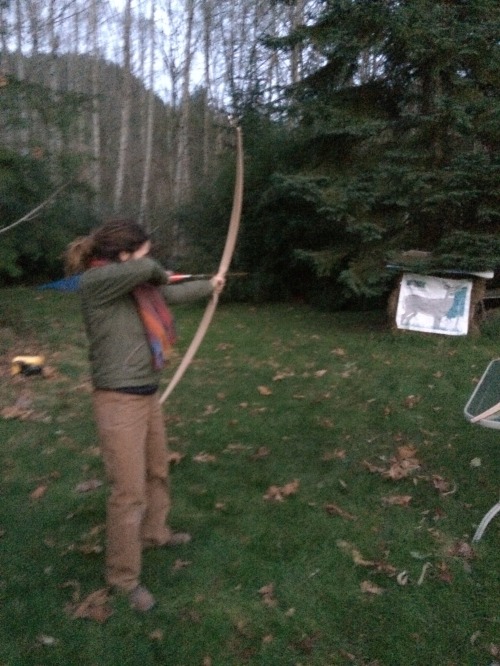
Great article! It’s cool to see the cohort connecting with the Sahlins, they’re some fine upriver folks. I really enjoyed making a bow with Steve, also, and recognize that red oak. Nice work, Petra!
(Thank your chef!)
– Mike
Wow, I didn’t even know that you had written a piece about us! I just stumbled over it by accident and am so delighted that you wrote about my awesome husband Steve. Great article!
I just wanted to let you know that I just made him his very own website. You can check him out at http://www.twofeatherswildernessschool.com
Cheers, and keep making those fires!
PS: The day I learned how to make my first friction fire ever, here is what I wrote in my journal:
“It was an incredible day for two reasons. Number one, I made fire rubbing two sticks together. Number two: I found out that I’m pregnant.”